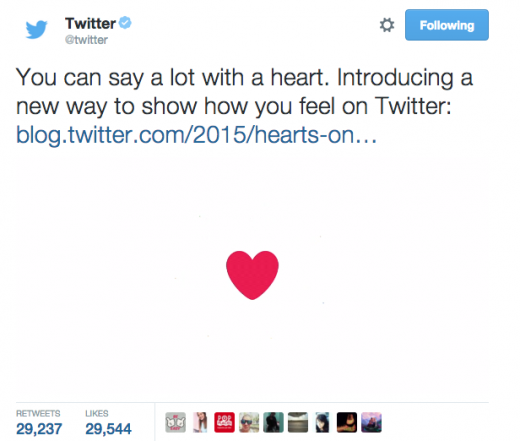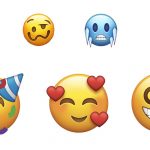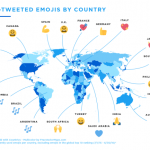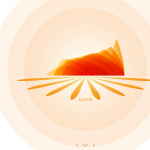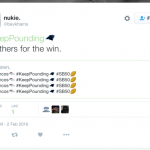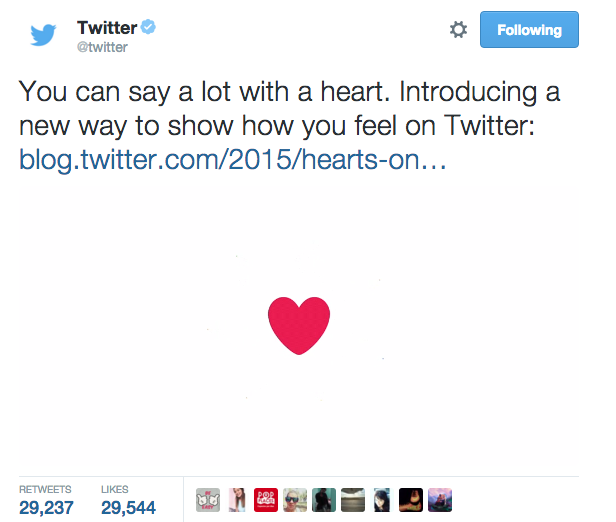the actual fact behind Twitter’s exchange from Favorites to Likes and Now Emoji testing
November 20, 2015

past this month, Twitter decided to maneuver forward with altering its favorite (star) button to a like (hearts) button.
And all of Twitter broke lose! angry tweets and remarks ensued.

for those who missed it, here is fast snippet from Twitter’s blog explaining the explanation for the change:
“we are changing our celebrity icon for favorites to a heart and we’ll be calling them likes. We need to make Twitter easier and more rewarding to make use of, and we all know that every now and then the famous person will be confusing, particularly to newcomers. it’s possible you’ll like a variety of things, however now not the whole lot may also be your favorite…the guts is extra expressive, enabling you to deliver a range of feelings and easily join with individuals. And in our exams, we discovered that people cherished it.”

I’m now not positive how many individuals examined out the like button, or their demographics, but evidently the response that Twitter received once it carried out its favorites to hearts alternate globally, was once no longer conclusive with the check.
In an try and repair this, reports show that Twitter is experimenting with emojis, as solution to present people with more choices.
The question is still: Why this variation? Why did any individual care in regards to the trade from favorites to hearts? Do we need emojis on Twitter?
It seems that, many Twitter super fans had their very own working out of what a “favourite” way. To them, a celeb button doesn’t always represent a positive “like” emotion. It displays that they’ve either viewed the tweet or are bookmarking it for later on. it sounds as if some even used it to be able to show dislike. I’m not certain precisely how that works however…ok.
A analysis learn about conducted with over 600 respondents’ on their use of the favorite button unearthed these findings:
- users used the favourite button to reply or express acknowledgement to a Tweet.
- Respondents used it as a non-verbal on-line verbal exchange
- in contrast to retweets, users used the favorite button as solution to privately interact with Tweets.
a much more fascinating discovering from this research is that, a number of the respondents whereas privy to the favourite button didn’t in reality use it so much or pay particular attention to the button. The analysis also confirmed that customers hardly visited favourite checklist part on Twitter.
So the real purpose behind Twitter’s trade?
before the change, the usage of the favourite celebrity button might have change into just a little bit more mundane. whether the exchange is one that’s welcomed or now not, Twitter has succeeded in getting folks to express some form of emotion against a function that they’ve had for years.
it is doubtful if the transfer to emojis will be capable to exchange the use of the celebrity favorites button, as using an emoji regularly provides a more casual tone to a conversation. For a platform such as Twitter that is widely used both professionally and for my part, it should current a option to blur the traces and gear the platform against a so much youthful target audience.
on the end of the day, on the other hand, while I’m a tremendous proponent of shopper-centric advertising and marketing, turning a blind eye to what users declare they want may just become an advantage for Twitter.
Now, each time you must hit the new “like” button or wonder if you can use an emoji (if it’s eventually carried out), you can also put in some more idea. And anything else that gets you to have interaction more while the use of the platform, is basically a win for Twitter.
Digital & Social Articles on business 2 neighborhood
(41)

